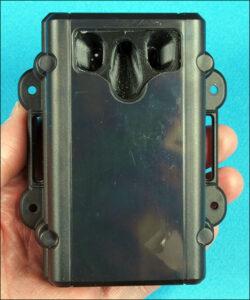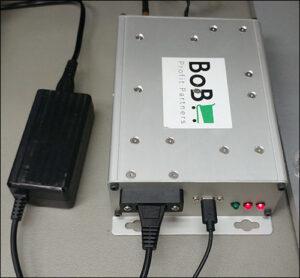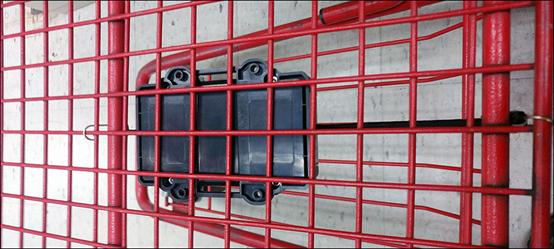A retailer will face losses due to theft and other reasons, but one of the more common losses is simple human error.
Craig Moyer, owner of technology start-up BoB Profit Partners, said that US retailers lose about $2 billion each year due to the “bottom of basket” (BoB) problem. BoB means that unpaid products are leaving. The shop was missed. For the past three years, the company has been developing a solution using Phase IV Engineering's RFID technology.
Keeping track of the items at the bottom of the shopping basket leaving the store is not a simple problem. A bag of dog food and a bag of paper towels that customers put at the bottom of their shopping carts are often overlooked, and these will ultimately increase the retailer’s loss. This problem is so common that clerk will be repeatedly emphasized "remember BoB" when working.
The COVID-19 epidemic has exacerbated this problem as product packaging sizes have become larger and larger, which makes shoppers more likely to need to make full use of the space in their shopping carts. In addition, the use of plexiglass to build a barrier that helps prevent the spread of diseases also makes it more difficult for cashiers to look down at the bottom of each shopping cart.
Moyer said that the BoB incident was largely unintentional. When customers leave the cashier and go back to their car, pack the goods that have been paid, they find that there is an omission in the settlement, and they want to go back to the cashier and have to wait in line again. When paying, they are more inclined to choose to leave altogether. "Anyway, this is a bad customer experience."
Phase IV Engineering's Leap sensor technology based on the Internet of Things enables BoB Profit Partners' retail loss prevention system to solve the problem of unpaid items that are missed on the bottom shelf of the shopping cart. It consists of an infrared time difference sensor built into the shopping cart. The shopping cart has an RFID tag for mobile payment that can respond to inquiries from a fixed reader at the cash register. If the special computer running the Phase IV software detects the item at the bottom of the shopping cart, it will display a reminder on the screen for customers and shop assistants to view.

SONYDSC
As a retail loss prevention and theft prevention consultant, Moyer established BoB Profit Partners more than three years ago. He negotiated with several leading retailers and developed a loss prevention plan. Many of his customers are troubled by the BoB detection problem, and most of them have been using camera solutions. For example, Lane Hawk uses pixel-based artificial intelligence to identify items at the bottom of a shopping cart. However, such a system requires maintenance to add new products.
"Retailers once said to me that they don't want to know what's in the shopping cart, but just want to know if something is missing. I think RFID can solve their problem." To this end, Moyer also asked a researcher on potential
RFID solutions. University, but students cannot create a solution suitable for such an environment, because the system needs to be flexible and stable enough to be installed in a shopping cart that can be nested, moved, and used in high-traffic areas. "Everyone knows the problem, but finding a solution is important. This problem is easy to understand, but difficult to solve."
In 2018, Moyer began to collaborate with Phase IV Engineering to develop solutions using its Leap sensor technology. Scott Dalgleish, CEO of Phase IV Engineering, said: "We considered multiple options, but it must be a very stable and durable solution. The final solution developed is a solution with micro The processor, storage board,
UHF RFID tag, battery, and four time difference sensors are devices that transmit infrared signals down to the bottom of the shopping cart. The sensors detect the distance the infrared light travels before reflecting back to determine its field of view Objects."
Normally, the bottom of an empty shopping cart will be 14 inches deep, but if there is something in the cart, the distance will be shortened. The power required by these devices is very low, so there is no need to change the battery frequently. The system is designed in such a way that the device stays in sleep mode before approaching the checkout counter. A standard UHF RFID reader installed in each cashier channel sends an interrogation signal, which is received by the chip of the shopping cart module.
The transmission will prompt to activate the sensor to read the data and send the data back to the reader via the UHF RFID tag. The measurement results are transmitted to the software running on the local computer to determine whether any items are detected. Typically, stores use a screen connected to a computer that displays reminders in opaque letters to check the bottom of the shopping cart, which can be seen by both cashiers and customers. Moyer said, “The two-way information sign is a way to correct the problem and remind people to check the bottom of the shopping cart.”
At the same time, the system can also send notifications to the management to let them know the situation. This makes it possible to solve any problems that customers have. The technology can also be used for self-checkout channels.
The sensor technology here contains various functional attributes to adapt to various situations that may occur in the store. For example, Dalglish explained that if a shopper puts a foot under the shelf of a shopping cart while waiting in line, the system will recognize the situation and will not mark it as an abnormality.
Today, the solution has undergone prototype testing, and the commercial version is also being deployed at Saubel'sMarkets in York, Pennsylvania. The solution here includes RFID readers installed on all six checkout channels and sensor devices installed on all 100 shopping carts. Dalglish reported that the solution can use off-the-shelf UHF RFID readers, "we are using very mature technology", which can work with any common UHF RFID reader supplier.
In the long run, Moyer hopes to add additional features to the solution, such as collecting data for analysis, including collecting data on which shopping carts have passed through which cashier channels, the speed of passage, and when delays occurred. Usually, the retailer will directly purchase the solution and extend the service agreement. The solution of BoB Profit Partners is applying for a patent.
Moyer predicts a payback period of 6 to 8 months, which is based on a reduction in the number of missing goods that have not been paid. The system can be used throughout the United States. "We are ready for any retailer who needs a shopping cart, such as national, regional and local grocery chains, home improvement and large stores."



